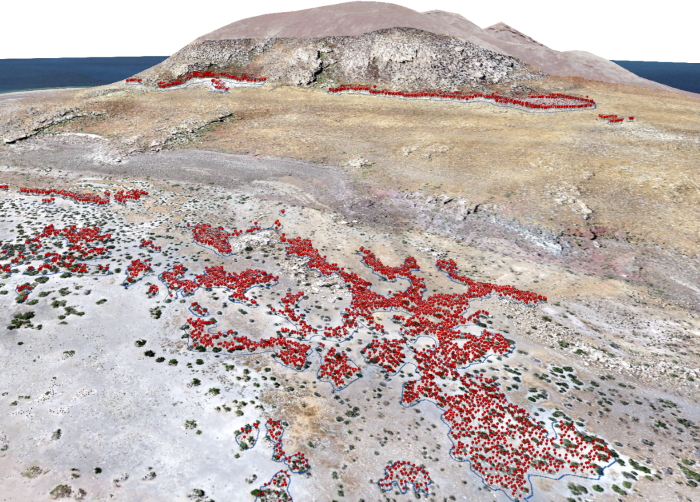NUSO 2015 Research Missions
Census of Ground-nesting Colonial Waterbirds
Anaho Island National Wildlife Refuge in Nevada

Anaho Island National Wildlife Refuge (NWR) was established in 1913 to provide a secure nesting area for colonial waterbirds. Management objectives for this refuge include monitoring the breeding populations of the various colonial nesting species (primarily American white pelican, double-crested cormorant, California gull, and great blue heron). Anaho Island NWR supports the one of the largest American white pelican nesting colonies in the western United States. On average 10,000 pelicans return to Anaho Island each spring for the nesting season. The colonial nesting birds are vulnerable to multiple factors (e.g., predation, weather events, disease, lack of sufficient forage; human disturbance) that can influence their productivity and survival.
Monitoring of the waterbird nesting population at Anaho Island NWR is essential to detect and evaluate changes in waterbird distribution and abundance at Anaho Island NWR, and to understand how those changes affect those waterbird populations throughout the western United States. Reliable baseline information on breeding population sizes and changes over time would allow the US Fish and Wildlife Service to evaluate population levels, detect changes, and make informed decisions. Various methods of obtaining population data are being evaluated to select the best method for estimating population sizes of ground-nesting waterbirds at Anaho Island NWR in the future. These colonial nesting birds are sensitive to human disturbance and will abandon their nests if appropriate methods are not utilized during population surveys. Unmanned aircraft systems (UAS) may prove to be a useful alternative to land-based and/or manned aircraft based visual surveys and have the potential to be more economical, less obtrusive, safer, and a more efficient and versatile means to survey colonial nesting waterbirds at Anaho Island NWR. High-resolution color images and infrared images will provide detection of individual nesting pelicans and other ground-nesting waterbirds.
Study Points of Contact:
Nancy Hoffman, Wildlife Refuge Manager
U.S. Fish and Wildlife Service, Stillwater National Wildlife Refuge Complex
nancy_hoffman@fws.gov
Donna Withers, Wildlife Refuge Specialist
U.S. Fish and Wildlife Service, Stillwater National Wildlife Refuge Complex
donna_withers@fws.gov

